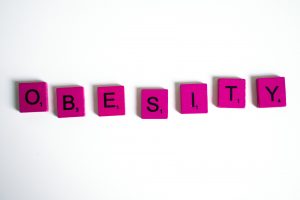 At Prime Performance in Totowa, New Jersey, we work with people who want to be healthier and achieve their fitness goals. Some people want to build muscles, while others want to lose weight. While there are many different goals, there are also different levels within those goals. For instance, we have athletes that want to improve their already muscular physic and people who have never lifted anything heavier than a remote, both have a goal of building muscles, but are at different levels. Many people want to lose weight. Some may be barely overweight, just wanting to shed five or ten pounds, while others are obese and not only want to shed weight, but need to lose it to be healthy.
At Prime Performance in Totowa, New Jersey, we work with people who want to be healthier and achieve their fitness goals. Some people want to build muscles, while others want to lose weight. While there are many different goals, there are also different levels within those goals. For instance, we have athletes that want to improve their already muscular physic and people who have never lifted anything heavier than a remote, both have a goal of building muscles, but are at different levels. Many people want to lose weight. Some may be barely overweight, just wanting to shed five or ten pounds, while others are obese and not only want to shed weight, but need to lose it to be healthy.
What is obesity and who is obese?
Obesity is a way of indicating the accumulation of 20% or more body fat than they should have. The way that is determined is often by the person’s BMI—body mass index. BMI uses height to weight ratio and then translates that to a number. If it’s 30 or higher, it enters the classification of obese. Waistline measurements can indicate abdominal obesity. Measurements of 35-inches or more in women and 40-inches or more in men indicates abdominal obesity.
Not all BMI measurements are relevant.
Since muscle tissue weighs more than fat tissue does, an extremely muscular person can get a BMI number that correlates to overweight or obesity, when in reality, they have very little body fat, but a whole lot of muscle. The reverse can be true as well. A person that’s very out of shape with almost no muscle may have lots of fat, but their BMI indicates they don’t have a weight problem. Waist size and comparing waist-to-height ratio not only can help define obesity better, but also identify people more at risk for serious repercussions from their weight. People with excess belly fat are far more at risk than those with excess fat in the hip area.
The dangers of obesity, particularly those with a large waist circumference.
Not only is obesity dangerous to your health, it’s self-perpetuating. It can change your metabolism and make it even harder to lose weight. Obesity increases inflammation and puts you at risk for other serious conditions like heart disease and diabetes. Obesity can increase the risk of complications of pregnancy and restrict airways when sleeping causing sleep apnea.
- Obese people have a higher incidence of non-alcoholic fatty liver disease that causes scar tissue—cirrhosis. It can lead to liver failure and has no symptoms to alert you to the problem.
- A higher risk of developing gall stones is also a problem for obese people. It can cause an imbalance of cholesterol in the bile and that causes gallstones.
- Another problem faced by obese people when trying to shed extra pounds includes joint problems and osteoarthritis. Excess weight on the joints and cartilage cause more wear and tear, making exercise even more difficult.
- Eating healthy and getting exercise can go a long way in helping weight loss. We create programs designed for your fitness level, so you can succeed.
For more information, contact us today at Prime Performance
